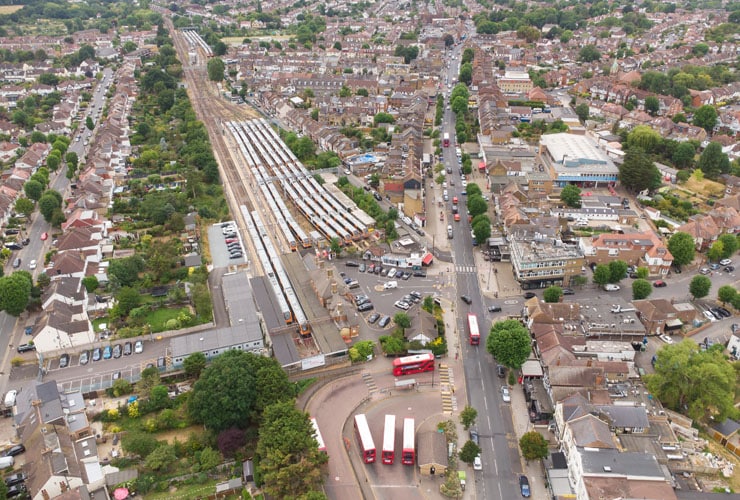What is a General Permitted Development Order?
A General Permitted Development Order (GPDO) is a legal order which specifies the types of development for which planning permission is granted by way of permitted development rights. It also specifies the conditions, limitations and exceptions that apply to these rights.
Permitted development is a planning principle that grants planning permission for certain kinds of development or changes of use without having to formally apply for planning permission to do them. The rights to carry out the work or change use without planning permission are known as permitted development rights.
Article Updated: August 2025

-
by Robert Jones, Founder of Property Investments UK
With two decades in UK property, Rob has been investing in buy-to-let since 2005, and uses property data to develop tools for property market analysis.
GPDO Background
A General Permitted Development Order is so-called because it becomes law by way of an order or statutory instrument made under an Act such as the Town & Country Planning Act.
A General Permitted Development Order is known as a GPDO for short.
There have been a number of different General Permitted Development Orders over the years. The latest GPDO covering England is The Town and Country Planning (General Permitted Development) (England) Order 2015 also known as the GPDO 2015.
Amendments to a GPDO may be made from time to time by means of further statutory instruments. This has been done a number of times since GPDO 2015 was introduced.
General Permitted Development Orders apply differently to different types of property, eg. residential, commercial and agricultural. For residential property, the permitted development rights which apply to houses generally do not apply to flats, maisonettes or other buildings.
General Permitted Development Orders operate in Northern Ireland, Scotland and Wales with differences applied by their respective Governments.

What does a GPDO Cover?
The General Permitted Development Order 2015 specifies 21 parts or categories where permitted development principles may apply. These are given in what is known as Schedule 2 of the GPDO. They are:
- Part 1: Development within the curtilage of a dwelling house.
- Part 2: Minor operations.
- Part 3: Changes of use.
- Part 4: Temporary buildings and uses.
- Part 5: Caravan sites and recreational campsites.
- Part 6: Agricultural land and forestry.
- Part 7: Non-domestic extensions, alterations etc.
- Part 8: Transport-related development.
- Part 9: Development relating to roads.
- Part 10: Repairs to services.
- Part 11: Heritage and demolition.
- Part 12: Development by local authorities.
- Part 12A: Development by local authorities and health service bodies.
- Part 13: Water and sewerage.
- Part 14: Renewable energy.
- Part 15: Power-related development.
- Part 16: Communications.
- Part 17: Mining and mineral exploration.
- Part 18: Miscellaneous development.
- Part 19: Development by the Crown or for national security.
- Part 20: The construction of new dwelling houses.
How GDPOs affect Residential Property
General Permitted Development Orders affect residential property in several ways. Part 1 and Part 2 of GPDO 2015 are particularly relevant to residential development, although other parts may affect them too.
Part 1 - Development within the Curtilage of a Dwelling House
- Class A: The enlargement of, improvements to or other alterations to a dwelling house.
- Class AA: The enlargement of a dwelling house by the construction of additional storeys.
- Class B: Additions etc. to the roof of a dwelling house.
- Class C: Other alterations to the roof of a dwelling house.
- Class D: Porches
- Class E: Buildings that are incidental to the enjoyment of a dwelling house.
- Class F: Hard surfaces incidental to the enjoyment of a dwelling house. For example, driveways.
- Class G: Chimneys and flues
- Class H: Microwave antennas.
Part 2 - Minor operations
- Class A: Gates, fences, walls etc.
- Class B: Means of access to a highway.
- Class C: Exterior painting.
- Class D: Electrical outlets for recharging vehicles.
- Class E: Electrical upstands for recharging vehicles.
- Class F. Closed-circuit television cameras.
- Class G: Moveable structures for pubs, restaurants etc.

Limitations and Exceptions
General Permitted Developments Orders allow for some exceptions or limitations. These mean that certain types of development or development in certain locations which is otherwise allowed under permitted development cannot be carried out without planning permission. These areas are sometimes known as protected areas.
If planning permission is required, it is worth speaking the local planning department and looking at a PPA (planning performance agreement).
For protected areas, permitted development rights may be removed or restricted in National Parks, Areas of Outstanding National Beauty, The Broads, World Heritage Sites and certain other designated areas.
A regulation known as an Article 4 direction allows local planning authorities to remove permitted development rights for some types of development in some parts of their area. These might be used in a conservation area or to restrict the right to convert a house into a small HMO or house in multiple occupation.
Permitted development rights can also be removed by planning conditions which have been attached to a previous grant of planning permission in relation to a particular property.
In some cases permitted development rights can be expanded via a Local Development Order or Neighbourhood Development Order.
Permitted development rights do not remove the need to abide by other restrictions and controls on development. For example, building regulations, legal restrictions and landlord and tenant covenants.
Prior Approval
Some permitted development rights include a prior approval clause. In these circumstances, anyone planning work must obtain prior approval of specific aspects of the development from the local planning authority before starting work.
When prior approval is needed a local authority can only assess the application in relation to specific aspects such as flood risk, noise and contamination.
Prior approval is not the same as applying for planning permission. Different local authorities have different ways of applying for prior approval. Normally if the local authority does not respond to a request for prior approval within a specified time the permitted development may go ahead.
If it is not clear whether a particular planned development is covered by permitted development rights it is possible to apply for a lawful development certificate giving a legally binding decision from the local planning authority.
Further Advice
As General Permitted Development Orders can be a complex area of planning it is important that those planning building or development work or a change of use should check the situation carefully first.
Further advice on general permitted development can be obtained from the relevant local authority, the Planning Portal website or a planning consultant.
